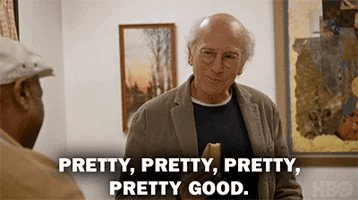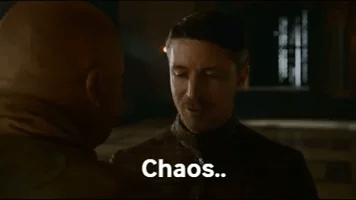Follow The Money: A Team's Payroll Is The Ultimate Bull$hit Detector
What working with Malik Beasley taught me about the NBA's opportunity hierarchy and how declining a rookie extension doesn't always mean the player will get the opportunity to bet on themself.
Rookie Extension Day has passed. Some players have locked in life-changing money, and others have chosen to decline deals (or weren’t offered one) to effectively bet on themselves.
A big season for a player in Year 4 can flip life-changing money into generational wealth.
I worked with Malik Beasley during this career window, and it was one of the best learning experiences of my career.
Malik’s Extension & RFA Timeline:
Malik’s then-current team, Denver, offered him a rookie extension, but he turned it down. He was later traded to Minnesota and, after the season, signed a restricted free-agency offer from them.
While in Denver, he was primarily a bench player. However, during one stretch of the 2018/19 season, he started 18 out of 23 games. This was the season before his extension summer.
During these 23 games, he averaged 30 minutes, 15.7 points, 2.4 rebounds, and 1.4 assists per game on 55/49/88 shooting splits—as Larry David would say, pretty, pretty, pretty, pretty good.
This is a basketball reference screenshot of Malik’s stretch as a starter during the 2018/19 season.
While these numbers looked great, and the film matched, only one number mattered: eighty million.
Gary Harris signed for that number during the summer of 2017, when he became extension-eligible. The Denver Nuggets and Gary agreed to a 4/80 extension a full year before he was scheduled to enter restricted free agency.
The 2018/19 season was Year One of Gary’s deal.
What Malik did during this 23-game stretch was irrelevant; he could have walked on water, but nothing would change the fact that Gary Harris would continue to have the opportunity to start.
The economics and reputations of everyone involved deemed it so.
The Opportunity Hierarchy:
Every player is tied to a series of decisions made by team executives, and every decision has a perceived risk/reward value.
This is no different than any other place of work. If you hire an employee, you will give “Your Hire” every opportunity to work out over someone who might be a holdover from the previous regime.
John Ross, who runs
, describes how chaotic a regime change can be in this piece about Victor Claver and Will Barton's rookie years from his time in Portland.There is a pecking order of opportunities in the NBA.
1st round pick > 2nd round pick.
New GMs FA signing > previous GMs holdover player.
Guaranteed deal > two-way deal
These are just a few situations that exist on every roster.
Some teams hide it better than others, but this is the math, and it exists everywhere in the league.
If you’re curious about why something is happening with your favorite team and it all seems a bit puzzling, remember Lester Freamon’s wise words: just follow the money!
An Offer You Can’t Refuse:
Usually, it's not bad if someone is willing to give you millions of dollars. However, there is one spot where the team has more leverage than at any other time, and the player is almost forced to accept the deal, even if they would rather bet on themselves- the role-player extension.
Here is the formula to look out for (this is not a mathematical formula).
Proven Rotation Player/Potential Starter + No Path To Starting + Good Team = Bad Spot
Moses Moody signed this type of extension for three years and 39 million. On the surface, this is great; he’s locked in 39 million, which, by the time it’s all said and done with taxes and fees to the union and his agents, will be around 18 million.
When I saw this extension on the ticker, it stood out. It reminded me of Malik and my college teammate Ed Davis, who were in similar situations during the extension-eligible period of their rookie contracts.
All three thought they were good enough to start. They had shown they could be starters in the league, but they were all in a situation where their current team didn’t want them as the long-term starter.
Malik, Ed, and Moody received offers at an average annual value correlated to a top 8 rotation money: 13mm, 10mm, and 6mm.
The following season, after Ed turned down an extension offer that would have put him in line with a top-level rotation player, he received 18 DNP-CD; the season prior, he only had one DNP-CD.
For Malik, it was eight DNP-CD and five games with under 10 minutes played in 51 games with Denver after he turned down top-level bench money. The season before, he played 81 of 82 games, missing one game due to the birth of his child.
If Moody turned down this offer and entered the season looking to bet on himself, he could have suffered the same fate as Ed and Malik: Get hidden deep on the bench behind Hield, Melton, Podziemski, Wiggins, and Payton II.
Sometimes, it's impossible to bet on yourself, even if you want to; this is when teams know they can lowball the player and tank their playing time if needed.
The Trade:
On February 4th, 2020, Malik was traded from Denver to Minnesota in a four-team deal, along with several other players and picks.
Denver sent out three guys (Beasley, Juancho, and Vanderbilt), all scheduled to come off rookie deals that summer. They presumably didn’t want to pay them,1 but they didn’t want to lose them for free.
So, Denver did what intelligent teams do: cut bait early to get assets back that can keep the machine moving instead of losing them for free.
Minnesota, which was so bad then that it wasn’t even invited to “The Bubble” in Orlando, got some serviceable players with potential upside. Denver got a first-round pick that could become a cost-controlled player for the next four years or be traded for a win-now player.
It seemed like a good move for both teams, and I’m sure no one involved with the trade is upset about it now. No big winners2 and no big losers.
On the other hand, I saw this trade as a massive win for Malik because it put him in a position where he was starting.
The move to Minnesota allowed him the opportunity every player wants: to bet on himself.
His bet would pay off via a four-year, sixty-million-dollar deal in RFA with Minnesota.
The Project & Meeting:
Personally, this trade was a win-win. Not only did Malik reach a place with more opportunity, but it also removed the conflict of interest that prevented me from pitching a new client.
Through my work with Malik, I had built up enough equity inside the Denver organization to quickly get a Gary Harris pitch into the right people’s hands. After a week of the project bouncing around the facility, I had peaked the brain trust’s interest enough that they wanted to meet to discuss it.
Eight days and 100+ views after I sent the project, I thought, oh shit, did my plan have a chance to work - could I get an opportunity with Denver or Gary?
On February 27th, 2020, Wes Unsleld Jr. and I sat in the lobby of the Ritz Carlton in LA Live and talked for two hours about the shooting of Beasley and Harris. At the time, Unsleld Jr was the top assistant for Denver and someone I had gotten coffee with before. We weren’t close, but we had a familiarity with one another.
Here is the accompanying video for the Gary Harris project I sent to the Denver Brain Trust. It is unedited. If you read The Blueprint, you know my setup was low-brow in 2019.
Long story short, nothing ever came to be after that initial meeting in LA.
There were a few more conversations with various people inside the organization, but it never advanced past discussions. I wasn’t that close to getting anything over the finish line here, and between Covid, “The Bubble,” and Denver trading Harris the next season to Orlando, it was terrible timing.
The Gary Harris Project:
I have unlocked the Gary Harris project3. If anyone wants to check it out, you can find it here:
Website: https://basketballnomads.com/harris
Password: Lowmanhelp (case sensitive).
During the EE summer, there were light negotiations on an extension for Malik, but ultimately nothing. Denver didn’t want to go to a number that Malik would say yes to, and Malik didn’t want to agree to a number Denver was comfortable with. This meant Malik was in a BAD spot when the season opened. If he had said yes, he would have had plenty of opportunity.
Turning down an extension that’s bench player money almost always exposes the player to this quick hook benching that long-term guaranteed money doesn’t.
I have zero clue about the other two, but at the time, it was apparent that neither was in their long-term plans.
Denver drafted RJ Hampton with the pick they got in the deal and flipped him and another 1st + Gary Harris (ironically) to Orlando for Aaron Gordon.
I have removed three pages of this project and one video to keep specific processes private.
Low Man Help is free. But if you enjoyed this post, you can support Low Man Help by buying a coffee. This money will be reinvested into LMH to create better content for you!
Intelligentsia House Blend fuels LMH and Marzie, and I can’t get enough of it!


















Appreciate the shoutout! Great work as always Marc. You the man brother! - John